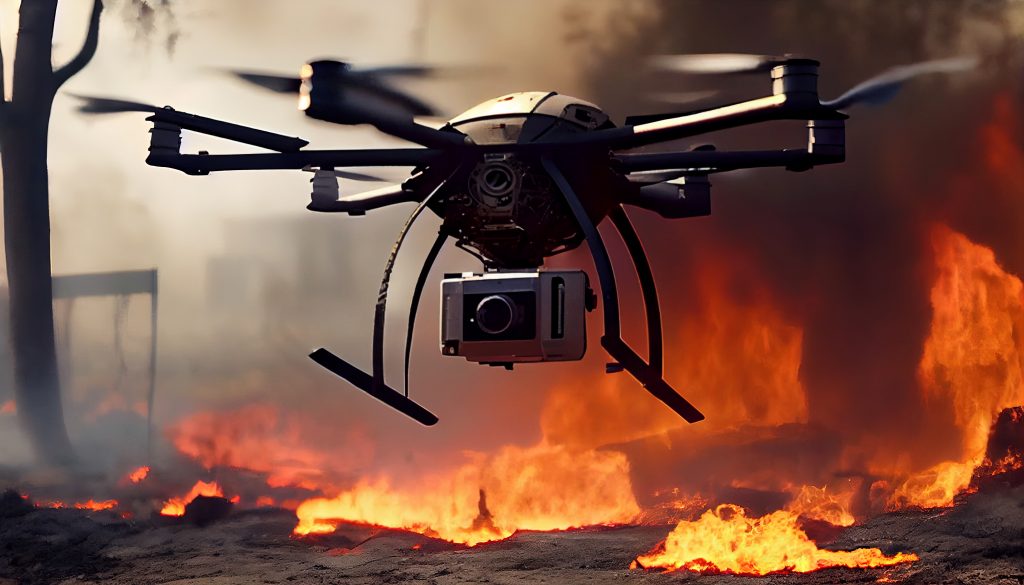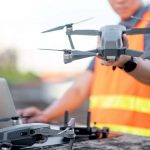This article is not legal advice, but a basic guide to drone safety.
Can someone help me navigate the drone laws? An important consideration in the enforcement of laws is that a person of average intelligence should be able to define what the law entails. Drone laws are so varied that it is difficult to ensure that what you are doing is not running afoul of the law. This article hopes to find an answer to how we can all fly our drones safely.
Geofencing
One of the big developments in drone safety is known as Geofencing. Geofencing uses GPS combined with onboard technology to monitor drone flight. This control over the flight path helps to keep the drone flying in safe areas free from other air traffic. The government has an interest in keeping sensitive areas safe. Geofencing is a great tool to keep drone operators from unknowingly flying into restricted areas.
Geofencing allows pilots to exercise the utmost caution when flying their drones. Data at the operators fingertips will allow for increasingly more drones to rule the airways. Autonomous drone technology benefits from knowing the locations of other craft, so that flight paths will be distinct. Drone pilots often enter restricted airspace over stadiums, geofencing helps eliminate this hazard.
The RaceDayQuads Case
In order to expand the drone industry, the government has issued a ruling requiring drones to signal location, called Remote ID. The program operates what some are calling “a digital license plate”. The case centered on whether drone operators are entitle to privacy. The court ruled that a drone flying around in public airspace could have no reasonable expectation of privacy. Drones are necessarily flown in public and the airways are about to be crowded with users. “Drones are coming, lots of them”, the court acknowledges that the airspace will need to be safe for all of these new operators.
The red carpet has been rolled out for the drone industry. The FAA is paving the pathway for drones to rule the skies. At this point local and state laws seem to be more restrictive on the drone industry. The US government has accepted that the drone business is going to continue to grow at increasing pace and will do everything it can to try to keep up to date with regulations to ensure safe operation
How Do I Operate Drones Safely in my State?
First you are going to need to register your drone with the FAA. The $5 fee allows you to fly your drone for 3 years. The following link will allow you to register your drone.
Next, look up the state you live in and get an understanding of their laws regarding drones. A few popular searches will give us an example of the different guidelines states expect operators to follow.
California Drone Laws
California makes specific mention of the duty of operators to avoid invading the privacy of anyone who comes into contact with the drones path. Drones can be invasive into someone’s private affairs. Operate drones in a manner that is respectful of this intrusiveness. Do not obstruct emergency personnel.
Drone operations within parks can be restrictive, pay attention to the parks regulations. Operators must retain VLOS, Visual line of sight, with the craft at all times. Keep your drones below 400ft. California drone law is meant to encourage safe operation, please follow all guidelines. To fly for commercial purposes, you must get your Part 107 license.
Hawaii drone laws follow the same general pattern as the California laws. Remember to stay cognizant of the rules and fly with safety. Do not operate drones within State Parks.
Texas drone laws also seem to highlight the same safety areas as the FAA and California.
Florida Drone Laws
Drone laws in Florida are administered by the FDOT, Florida Department of Transportation. Florida has an extensive list of information available to drone operators for safe use. Florida developed the B4Ufly app to help pilots know about any restrictions in their area. The app also gathers information to push the ability to further drone flights in the future. The data is useful in figuring out how to operate the airspace with an ever increasing number of drones.
Most of the Florida rules do refer back to the FAA for information on safe operation. Common sense examples of potential problematic activity would be flying a drone out of a moving car or equiping drones with some kind of dangerous device.
The 4th Amendment Right to Privacy
The ubiquitous nature of surveillance devices means that citizens are constantly being monitored. Oversight committees cannot possibly be expected to keep pace with the speed of technology. Police obviously love the benefits afforded by the technology and do not want to disclose their means of surveillance to the public.
Data collected from drones can be a valuable treasure trove of information. Drones were used to secretly monitor Black Lives Matters protests, raising some concerns about the freedom of affiliation. Breaches and negligence have led to sensitive data being leaked online for all to access.
Naturally, left unchecked, unscrupulous people will use technology in detrimental ways. The interests of the government need to be balanced with the private interests of citizens. Citizens want to be free to be able to conduct their persons, papers, and effects in a private manner. Drones are able to reach intimately into the homes of unsuspecting public. Thermal imaging could be used to penetrate the walls of the home.
Someone needs to fight to guarantee that citizens have protection from government oversight that is far reaching. Technology is always implemented by foretelling of the convenience. everyone’s life is supposed to be bettered by the introduction of new technology. The costs of the technology are only begun to be realized when the implementation is already complete. The people fighting to protect people’s rights are outnumbered, outspent, and overworked. Oversight committees will have a difficult time operating in the fast paced drone industry. Keeping up with all the new challenges that arise will be a full-time job.
Drone Smuggling
Drones use by the cartels is rising exponentially. Drones are aptly suited to smuggle light packages of expensive drugs for distribution. The cartels also use drones for counter-surveillance. The accessibility and cheap nature of drones allow cartels to have fleets of drones ready to do their bidding. The drones avoid radar detection. The drones can bypass border checkpoints. Confiscation does not impede the cartel’s goal, another drone is already taking its place.
This same attraction allows prisoners to receive contraband when out on the yard. Drugs are able to be smuggled easily. The difficulty in stopping this behavior is a challenge law enforcement will have to deal with for the foreseeable future.
In conclusion, drone laws vary from state to state. If you read the local laws and follow the guidelines of the FAA you will be fine. Geofencing and other technology will help make sure that you follow all applicable laws.
The airspace is changing rapidly, keep up to date. Download any useful apps and visit the FAA for the most recent information on drone laws.





